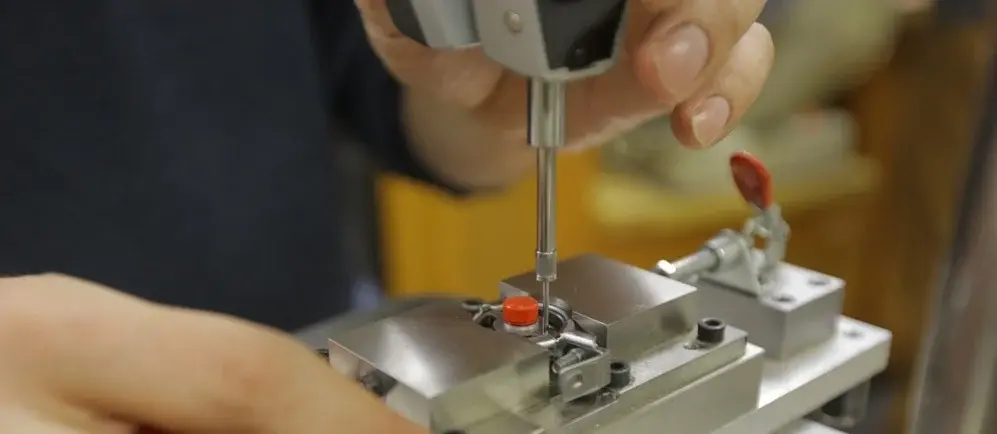Manufacturers who require precision metal stampings can benefit from understanding how to optimize the metal stamping process and reduce costs. This three-part blog series covers the 13 steps that OEMs should follow to ensure their metal stamped part will perform to their exacting specifications.
The first two articles in this series focused on how to achieve savings in time and production costs on metal stampings.
Metal Stampings Can Impact Your Bottom Line (Steps 1-3)
Planning Can Save Production Time and Costs (Steps 4-7)
In this final article in the series, we focus on six steps that can help manufacturers ensure quality throughout the stamping process: from testing out prototypes to monitoring quality in real time during production to keeping your supplier informed as your needs change.
- Step 8. Evaluate simulations and prototypes
- Step 9. Pick the best packaging
- Step 10. Build in time for tool design
- Step 11. Plan for quality with APQP
- Step 12. Monitor quality in real time
- Step 13. Keep in contact
Step 8. Evaluate simulations and prototypes
Manufacturers should take advantage of a metal stamper’s ability to provide 3-D part simulations and prototypes to improve manufacturability and reliability, when required.
These capabilities allow OEMs to test the design and functionality of component parts before investing in full production.
The prototype will be based on the latest design and prints, along with material specifications. The metal stamper can build a prototype tool to validate design, as well as employ simulation software to evaluate how the material forms under different conditions to produce the part. If the prototype/ simulation process reveals weaknesses, the tool can be redesigned to improve function, strength and manufacturability.
Although extra costs are associated with prototyping, this step can be completed in just a few weeks and often prevents costly problems during production and manufacturing. If the cost of a prototype seems prohibitive, the stamper can sometimes use simulations to evaluate the part design functional strength requirements and to optimize the part design to best suit the metal forming processes.
For further details on the advantages of simulations, view the blog, How Metal Stamping Simulation Software Saves Money.
Step 9. Pick the best packaging
Consider the importance of packaging as it relates to the final assembly. The optimal packaging will depend on the characteristics of the part and how it will be used on the assembly line.
Some parts can simply be dropped into bins as loose pieces while others should be packaged on a strip for automated assembly at the manufacturing plant. Parts that might get tangled must be packaged for easy access. In the same way, delicate parts that must maintain their exact dimensions should be packaged to avoid damage in transit or in handling for assembly.
Cost considerations often dictate packaging, but the overall costs of shipping, handling, storage and processing must be taken into account. In addition, if the parts will be shipped out of the country, customs and export services will impact packaging requirements.
PACKAGING OPTIONS
- Reel to reel
- Loose piece
- Parts supplied on a bandolier
- Labeling and bar coding
- Reusable packaging
- Special handling containers
- Custom packaging
- Export services
- Tape and reel
Step 10. Build in time for tool design
Allow time for tool design and development in the production schedule. Ideally, the stamper will have in-house tool design and build capabilities.
Manufacturers may be surprised to learn that it may take anywhere from 8 to 26 weeks to create a custom tool depending on the complexity and development of the part. Metal stamping engineers will take the manufacturer’s production requirements and key characteristics of the part into consideration when recommending the right design, taking into account the intended life of the program.
The technology that metal stampers may employ in the design and build stage includes:
- 3-D tool design and simulation software to develop complex tools
- In-die sensor technology to ensure consistent quality and reduce downtime
Step 11. Plan for quality with APQP
A metal stamper concerned with quality will follow the APQP (Advanced Product Quality Planning) process or a similar process to ensure quality from the outset.
The APQP process was developed by automotive manufacturers and involves their parts suppliers in every step of the development and launch process – from initial development through product launch and beyond. The APQP process monitors more than 20 areas before production begins, such as design robustness, design testing, quality inspection standards, product packaging, and more.
The medical device industry prefers DQ/IQ/OQ/PQ, which relates to verification and validation of both design activities and manufacturing process development to ensure that the device will function as specified. The processes are spelled out in the ISO 13485 standard for medical device manufacturers, including Design Qualification (DQ), Installation Qualification (IQ), Operational Qualification (OQ) and Performance Qualification (PQ).
The initial quality planning phase adds time to the schedule but saves quality problems down the road.
Step 12. Monitor quality in real time
Zero defects has become the norm globally.
To ensure quality in metal stamping, the firm should employ statistical process control systems and in-die sensors to monitor quality in real time.
In evaluating a metal stamping supplier, ask for an overview of the technology in place to ensure quality and how frequently that equipment is used. The best metal stampers will employ quality control processes to detect potential problems in real time. Manufacturers can ask for quality reports as needed.
QUALITY CONTROL TECHNOLOGY IN METAL STAMPING
- Statistical process control systems
- Optical vision systems
- Functional gauges and custom gauges
- Digital measuring machines with metrology software
- In-die detection systems
- In-die measurement systems
Step 13. Keep in contact
It may go without saying that it pays to stay in close communication with the metal stamping firm.
If you see the potential for changes in production volume down the road, it helps to alert the metal stamper to the possibility and talk over what preparation might be required.
A customer-focused metal stamping firm will assign a project manager/engineer as a single point of contact for all new programs. During production, a customer service representative would be assigned who knows the customer’s industry and unique business requirements. Once production is underway, it is advantageous to work with a customer service representative who understands the client’s industry and unique business requirements.


